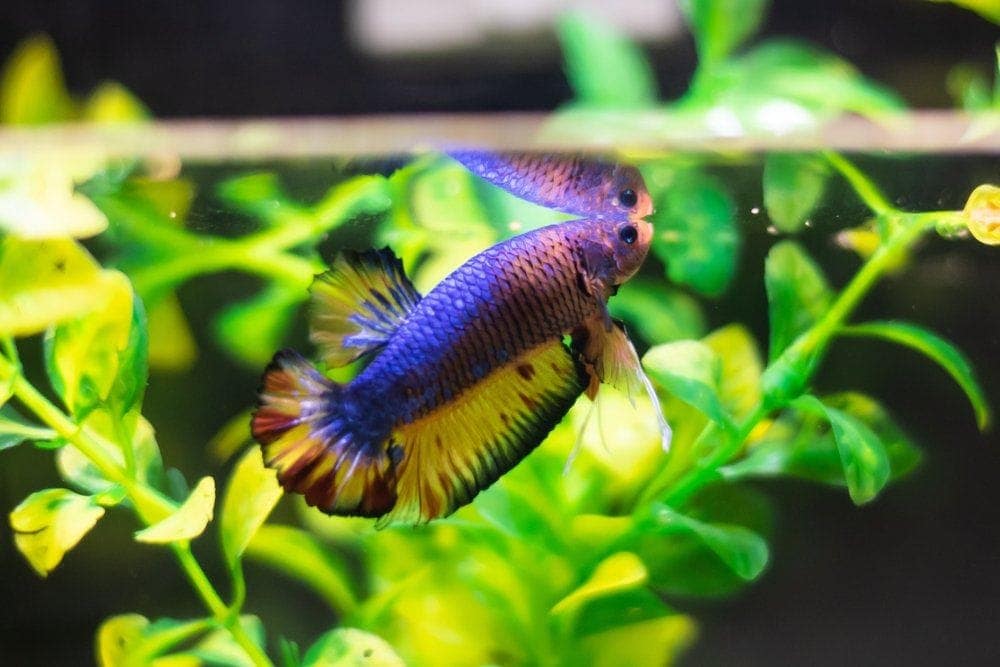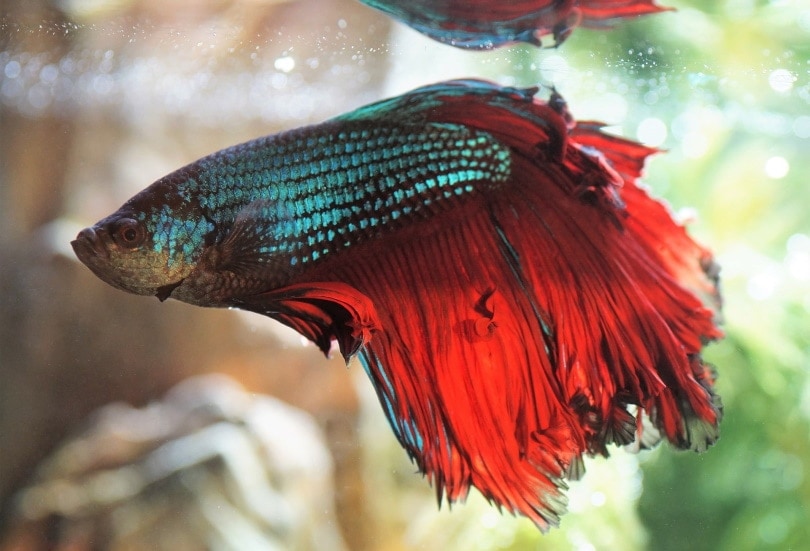Velvet Disease in Betta Fish: Vet-Reviewed Signs, Treatment & Prevention
Updated on

Click to Skip Ahead
Betta fish (Betta splendens) are little fish with strong personalities that many people keep because of their bright and shiny colors. But, on the other hand, they are not well suited to living in a small, unfiltered container, contrary to what some unscrupulous pet sellers may suggest. Indeed, betta fish require special care and cannot be kept in tiny jars that serve as a decoration on the corner of a table.
One of those parasitic diseases that can have disastrous consequences for betta fish is velvet disease, which must be treated as soon as the first signs appear.
One of those parasitic diseases that can have disastrous consequences for betta fish is velvet disease, which must be treated as soon as the first symptoms appear.
What is Velvet Disease in Betta Fish?
Don’t be fooled by its fancy name: velvet disease is a condition that can cause serious problems in fish if left untreated. It is caused by a microscopic parasite called Oodinium. Tiny golden-yellow spots develop on the fish that appear to be dusted or scattered over the head, fins, and body. By this time, the infestation is already severe. This disease is also called rust or gold dust disease. It can affect all types of fish living in freshwater, but is usually seen in tropical fish (which includes Bettas).
- A dirty tank
- Poor quality water
- No water filtration
- Large fluctuations in water temperature
- Poor immune system
- Introduction of an infected fish into the tank

What Are the Signs of Velvet Disease?
The signs of velvet disease vary depending on the severity of the infection. Besides, it is not easy to spot the damage caused by the parasite at the beginning of the infestation, but one can notice that the fish’s body is covered with a thin “golden” or “rust-colored” layer, much like velvet.
The behavior of the contaminated fish will also change: they will appear sluggish, weakened, will swim with contracted fins, and rub their body against the walls of the aquarium in an attempt to dislodge the parasite. You may notice a loss of appetite, and the colors of your fish may appear duller.
As the disease progresses, small white-yellowish dots appear on the fish, and a kind of mucus may be visible on their body, which is a defense mechanism of the betta’s immune system.
- Ragged skin
- Opaque eyes
- Ulcers
- Clamped fins
- Bulging or protruding eyeballs (also called exophthalmos, or Popeye disease)

- Note: In any case, as soon as you see the appearance of one or more of these signs, seek advice from your veterinarian without delay. Early diagnosis will give you a better chance of saving your sick betta.
Is Velvet Disease Contagious?
Yes, velvet disease is very contagious. Besides, be aware that infectious diseases in fish are often the most problematic because a single individual can quickly infect all the others. So don’t wait before treating your betta!
How Long Does Velvet Disease Last?
The life cycle of Oodinium lasts between 10 and 14 days. On the other hand, it is difficult to know exactly when the disease will be eradicated, as the betta is usually not affected by only ONE parasite. Thus, depending on the parasite’s life cycle phases, the treatment you choose may last between 14 and 20 days or even longer. Indeed, the treatment must kill the parasites at each stage of their life; otherwise, the infection may reappear.
But the good news is that this pathology can be treated well with commercial antiparasitic products.
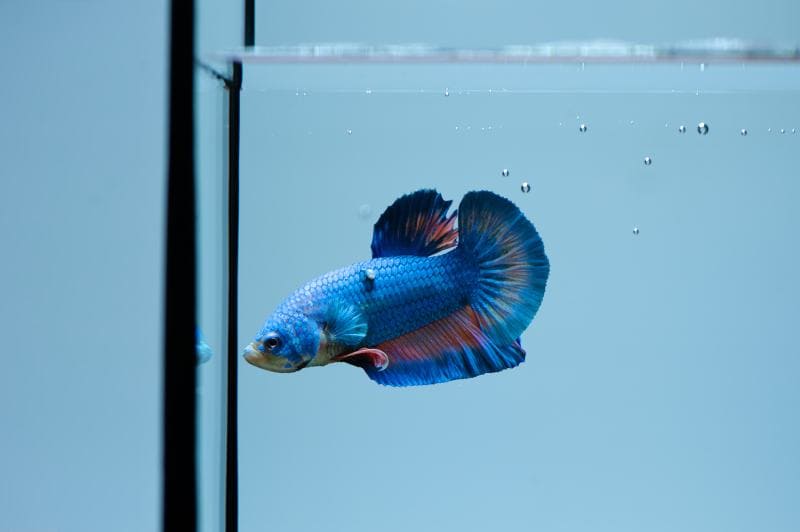
How To Treat Velvet Disease in Betta Fish in 3 Steps
1. Light up your fish with a flashlight (Optional)
One of the ways to recognize velvet disease is to direct a light source directly at the fish. The light will help you distinguish the golden or rusty sheen that this disease produces on the fish’s scales. As mentioned above, your fish will show other signs, such as lethargy and a loss of appetite, or they may frequently rub against walls and objects in the aquarium. Your fish could also have clamped fins.
2. Perform a Water Change to Establish Good Water Quality
It is important to note that no medication will work if the water quality in your aquarium is subpar. Prior to treating your Betta fish, you should check the water quality of your aquarium. Of key importance are:
- Ammonia: should be 0 ppm
- Nitrite: should be 0 ppm
- Nitrate: should be under 10 ppm
If your aquarium water isn’t of good quality, you should do a partial water change (25%) on a daily basis when dealing with ill fish, until the water quality is satisfactory. For otherwise healthy fish, a weekly water change is suggested.
If your aquarium’s filter contains activated charcoal (or carbon), you should remove it before administering medication to your fish. If you leave it in the filter, it will neutralize the medicine.
Because velvet disease is contagious, if you notice it on one fish in an aquarium, you should treat the entire tank (because the other fish are likely also infected).
3. Use commercial treatments
Aquarium salt (1 teaspoon of aquarium salt per 2 1/2 gallons of water) helps reduce the spread of the parasite, but this treatment is insufficient for completely annihilating the disease.
- Copper sulfate
- Methylene blue
- Formalin
- Malachite green
- Acriflavine
Follow the instructions provided for each treatment and continue to treat the water until your betta fish are no longer showing signs.
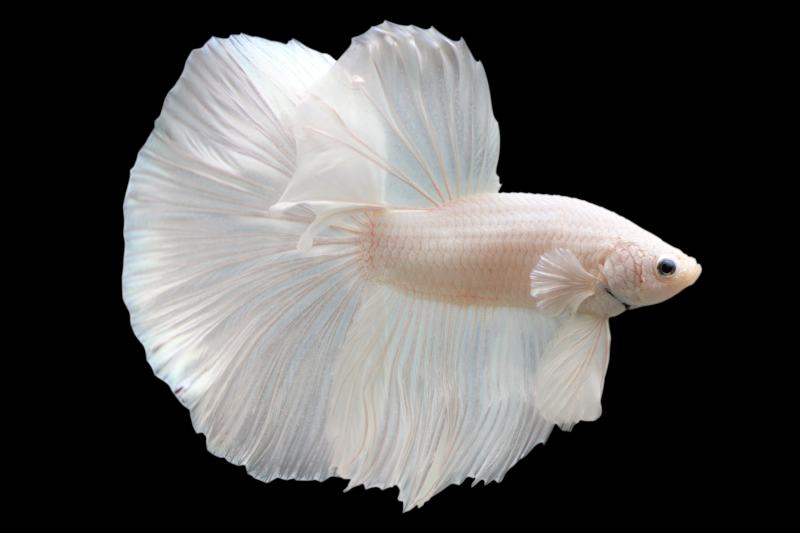
How To Prevent Velvet Disease in Betta Fish
It is always best to prevent diseases before they appear. Velvet disease can be stubborn and kill all your fish if not treated in time.
- Keep your aquarium water and accessories pristine
- Perform regular water analysis (ammonia, nitrite, and nitrate are key. Other tests include temperature and pH)
- Do not introduce a new fish without having quarantined them for at least 6 weeks
- Keep an eye on the behavior of your betta fish
- Observe their physical appearance: fins, tail, gills
- Don’t overcrowd your aquarium with too many fish
However, it is possible that despite all your good care, your betta will still develop the disease since the parasite may already be present in its body at the time of your purchase. Furthermore, it will attack your poor betta at the first sign of stress from your fish, which is another reason to maintain optimal conditions in its aquatic environment. Also, it is your responsibility to buy betta fish from pet stores where top breeding conditions are respected.
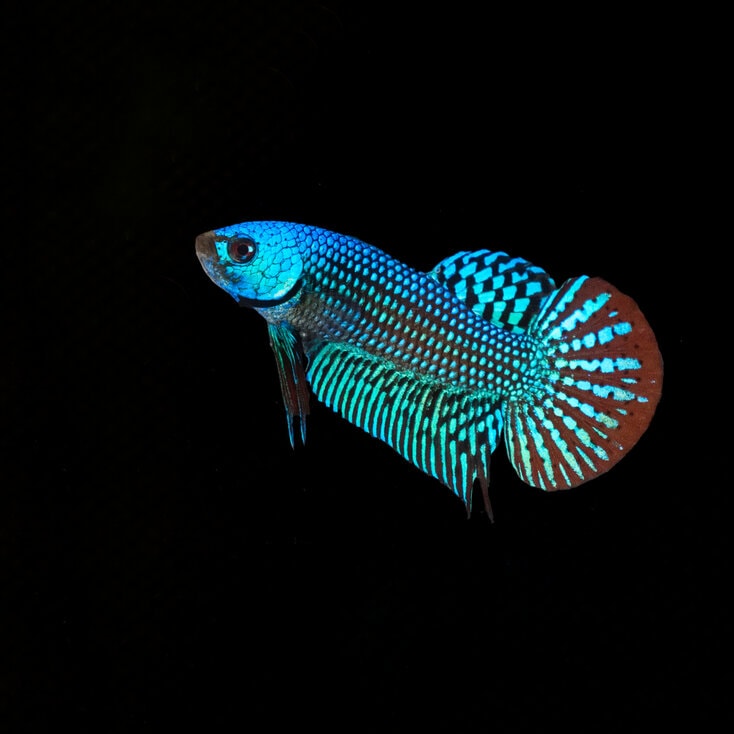
Final Thoughts
Velvet disease may have a magnificent name, but it can still be fatal to your splendid betta fish. To avoid the painful sight of golden-rusty dead fish floating around in your aquarium, you will need to analyze the water parameters regularly, avoid aquarium overcrowding, provide quality food, avoid stress, follow the procedure for introducing new fish, and maintain rigorous filtration and cleaning of the tank.
With early detection, the disease is curable; however, it is best to consult with your aquatic veterinarian or a fish disease expert for a diagnosis.
See also:
- Velvet Fish Disease: Vet-Reviewed Causes, Signs & Treatment
- 10 Best Saltwater Aquarium Fish For Beginners (With Pictures)
Featured Image Credit: ivabalk, Pixabay






